
Soil Associations
0711f WICKHAM 2
Soil and site characteristics
Slowly permeable seasonally waterlogged fine loamy over clayey, fine silty over clayey and clayey soils. Small areas of slowly permeable calcareous soils on steeper slopes.
Geology
Drift over Jurassic and Cretaceous clay or mudstone
Cropping and Land Use
Winter cereals and grassland in the Midlands; cereals in the Eastern Region dairying in the South West.
Component soil series
| Subgroup | Series name | Percentage | WRB 2006 link |
|---|---|---|---|
| 7.11 | WICKHAM | 50% | Eutric Luvic Planosols |
| 7.12 | DENCHWORTH | 15% | Eutric Vertic Stagnosols |
| 5.72 | OXPASTURE | 15% | Endostagnic Luvisols |
| 4.11 | EVESHAM | 10% | Calcaric Stagnic Vertic Cambisols |
Covers 1485 km2 in England and Wales
Soilscapes Classification
| 18 |
Slowly permeable seasonally wet slightly acid but base-rich loamy and clayey soils |
0711f WICKHAM 2
Detailed Description
This association is extensive where thin loamy drift covers Jurassic and Cretaceous clay shales. It consists mainly of fine loamy over clayey typical stagnogley soils of the Wickham series but, where drift is absent, clayey soils of the Denchworth series are common. The better-drained stagnogleyic argillic brown earths of the Oxpasture series and calcareous clayey soils of the Evesham series, are sporadically distributed. There are many small inclusions of other soils; these are described below and are listed in the key.
The association covers approximately 320 km² mainly in valleys but also on plateaux of Middle and Upper Jurassic rocks in east Leicestershire where Wickham soils have a larger than average silt content. Narrow alluvial flats along many valleys carry clayey, wet Fladbury soils and in south Leicestershire there are calcareous St Lawrence series. Clayey Holdenby and Lawford soils are associated with patches of clayey drift. On the Rhaetic and Lower Lias sediments in east Worcestershire where the country rock is more calcareous than elsewhere, Evesham and Haselor soils and the former Wedmore series are important associates.
This association covers 545 km² in Eastern England mainly in Lincolnshire and Northamptonshire but also in west Norfolk. In Lincolnshire it is mainly in the Lias Clay vale between Lincoln and Newark where the Trent river terrace deposits are a source for the superficial loamy drift. Patches of sand and gravel give small inclusions of Quorndon soils, and some coarse loamy over clayey soils of the Kings Newton series occur on the edge of the river terraces. Oxpasture soils become increasingly common towards the limestone scarp of Lincoln Edge, and small patches of Beccles soils are included where the association abuts chalky till. Evesham soils are uncommon in the Lias vale and are found mainly in south-west Lincolnshire. However, Oxpasture and Evesham soils are more common on Upper Jurassic and Cretaceous rocks bordering the Fens. The association also occurs in the Ancholme valley north of Lincoln; north-east and east of Lincoln on slopes of narrow valleys cut into chalky till; on the western edge of the Wolds; and in the deeply dissected valleys of the southern Wolds. In Northamptonshire the association occurs both in narrow valleys cut into the clay shales and on the plateaux formed by Upper Jurassic rocks. Here in the valleys, Evesham soils are less frequent than elsewhere and in general the soils on the hilltops are siltier than those in the vales, and Oxpasture soils are common. Quorndon soils are a common inclusion in west Norfolk on flat or gently sloping land at the foot of the chalk scarp. Here Oxpasture soils are not found.
In the South West, the proportion of Wickham and Denchworth soils is greater than in the Midlands. Lawford profiles are common in places, but Evesham and Oxpasture soils are relatively rare. The association, which covers about 300 km², occurs mainly in the wide vales of Gloucestershire, Wiltshire, Somerset and Dorset on Jurassic and Gault Clays. It also occurs on the Oligocene clays of the Bovey and Petrockstow basins, where Wickham and clayey Teigngrace soils occupy two-thirds of the mapped area and the ancillary soils mainly belong to the Ipstones and Brickfield series. There is also some disturbed ground and waste heaps from ball clay working. Small patches of Oak and Hornbeam soils are included on the gravels that cap small knolls in Dorset and south Somerset, and in north Wiltshire where the gravels contain flint and sarsen stone derived from the chalk outcrop to the south.
In South East England the association occurs on low ground in Oxfordshire and Buckinghamshire, over Lower Lias, Oxford, Kimmeridge and Gault Clays. On the Lias, it is present on the lower slopes of valleys, particularly along the Cherwell, below ridges capped by Middle Lias ironstone or Great Oolite limestone. Elsewhere the association occurs below the Corallian scarp and at the margins of river terraces. Oxpasture soils feature only occasionally, and Evesham soils are restricted to river terrace bluffs and to ground near the Corallian scarp. Some Kings Newton soils have been recorded on the terrace drifts and near the Upper Greensand outcrop. Where the drift is clayey, Lawford soils occur. Rowsham soils have been recorded in the Tiddington area.
In Northern England the association covers 45 km², principally in the Howardian Hills of North Yorkshire. Here it occurs on plateau sites where thin drift from weathered sandstone and siltstones covers clay shale. In Humberside, small areas near Brigg, in valley drift, and near Kirton-in¬Lindsey, on Head below the Lincolnshire Limestone escarpment, have fewer clayey inclusions than elsewhere.
Soil Water Regime
Occurring mainly on level or gently sloping sites, these soils which have slowly permeable subsoils are seasonally waterlogged (Wetness Class III and IV). Wickham, Evesham and Oxpasture soils respond well to artificial drainage hut, because of their poor hydraulic conductivity, the Denchworth and Lawford series are more difficult to drain effectively. When the soils are waterlogged, excess water moves laterally mostly as surface run-off.
In the South West of England having slowly permeable subsoils and sited mainly on level or near-level ground the soils are waterlogged for prolonged periods during the growing season (Wetness Class V) where average annual rainfall exceeds 800 mm. In drier districts like north Gloucestershire, waterlogging is generally confined to winter (Wetness Class III).
Cropping and Land Use
Over much of this association the land is used for cereals and ley grassland. Oilseed rape has expanded recently and provides an alternative break crop to ley grassland. There is little opportunity for spring cultivation so almost all cereals are autumn-sown. Cereal yields may be reduced by slight droughtiness. Soil structure is easily damaged if the soils are cultivated when wet and careful timing of field operations is critical. Grass yields are restricted by drought and the grazing period is limited during spring and autumn because of a risk of poaching. Wickham and Denchworth soils are acid in reaction but, Evesham and Haselor soils are neutral or slightly alkaline. In wetter districts most of the soils are under long-term grassland with small areas of autumn sown cereals. The grass yields are potentially large, and most of the soils are only slightly droughty though the grazing season is shortened because of the risk of poaching. In the wettest places, the maximum safe grazing period is as little as 100 days. Where the average annual rainfall is below 750 mm ley-arable farming is more usual. Where cultivated, the soils suffer from compaction and structural damage by machinery and the timing of cultivations is critical. Phosphorus levels are naturally low, but potassium is adequate for most plant needs.
0711f WICKHAM 2
Distribution Map
 |
Note that the yellow shading represents a buffer to highlight the location of very small areas of the association.
Keys to component soil series
South Western Region
 |
Midlands
 |
Eastern Region
 |
South Eastern Region
 |
Typical Landscapes
South Western Region
 |
South Western Region
 |
South Western Region
 |
Midlands
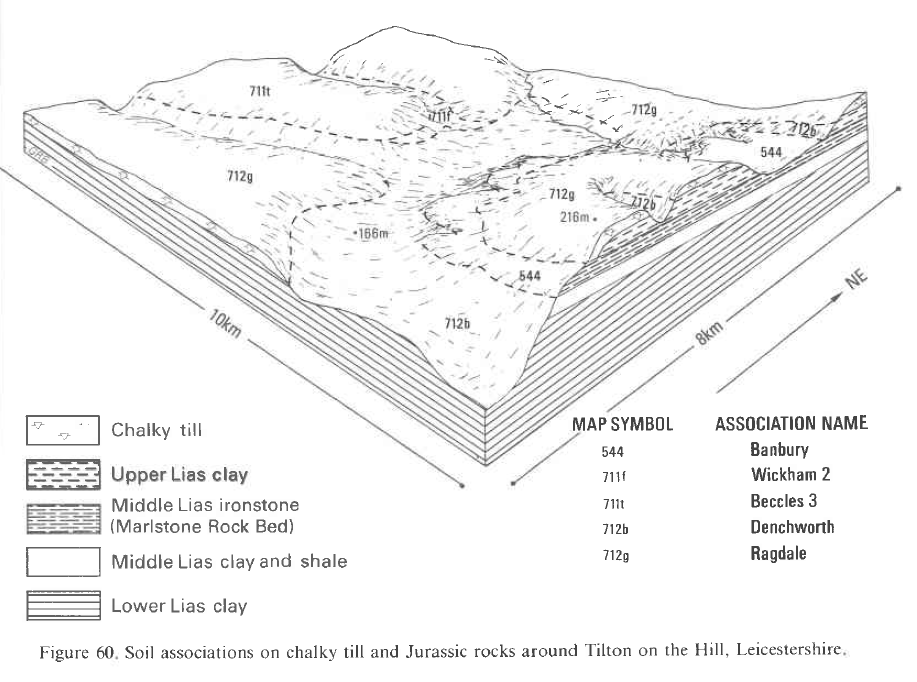 |
Eastern Region
 |
Eastern Region
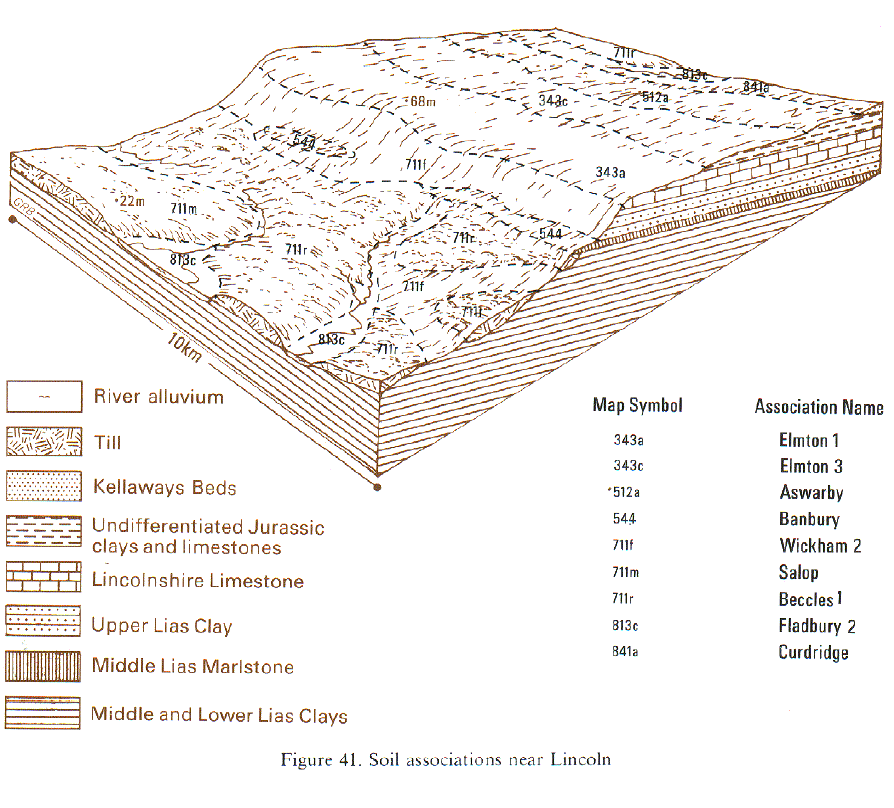 |
Eastern Region
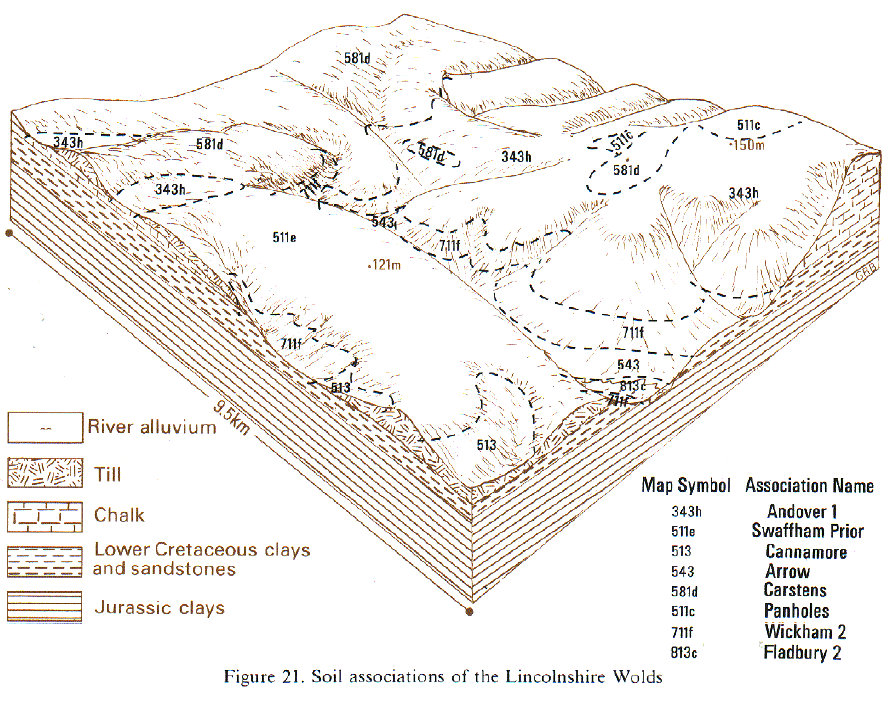 |
Eastern Region
 |
Northern Region
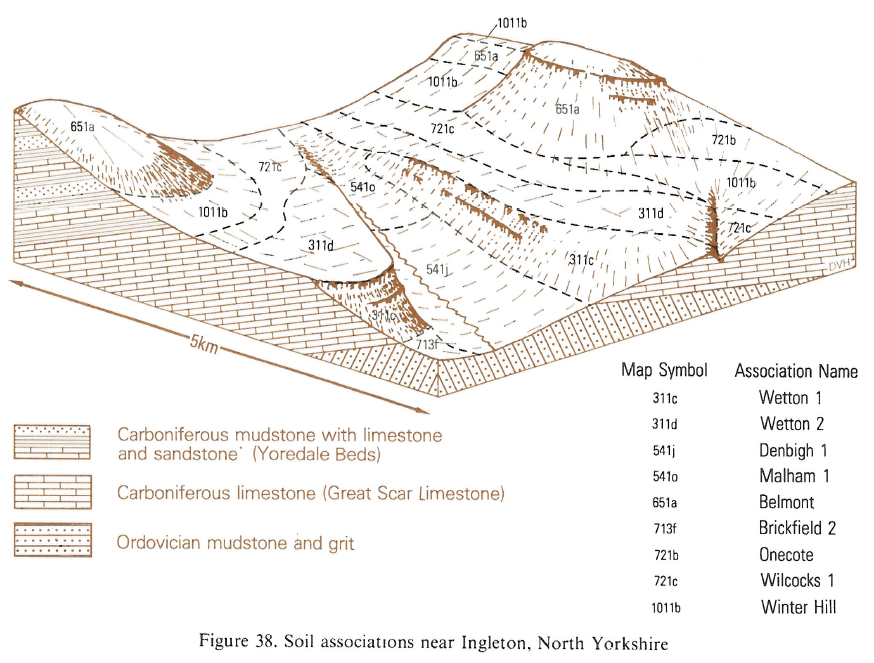 |
South Eastern Region
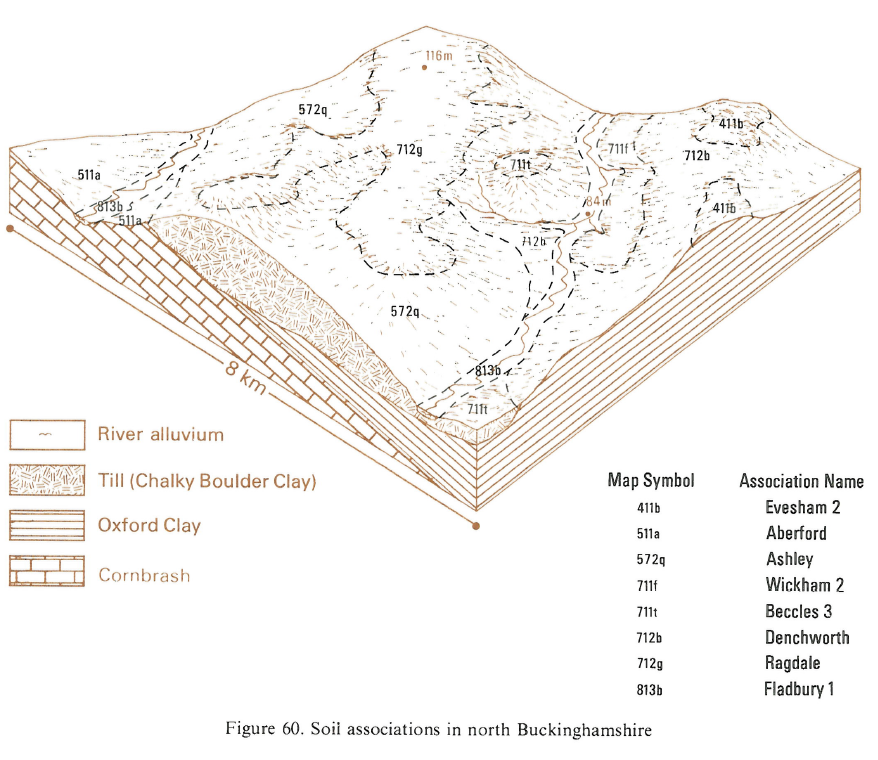 |
South Eastern Region
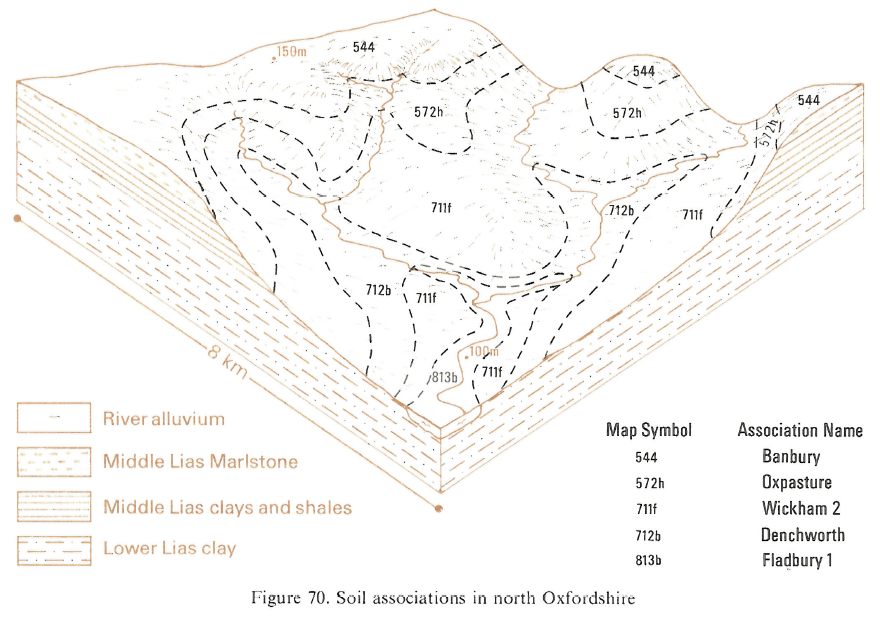 |
All information Copyright, Cranfield University © 2024
Citation: To use information from this web resource in your work, please cite this as follows:
Cranfield University 2024. The Soils Guide. Available: www.landis.org.uk. Cranfield University, UK. Last accessed 25/04/2024
